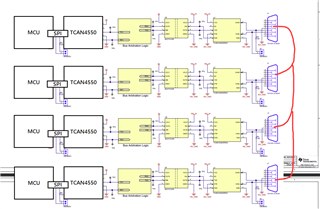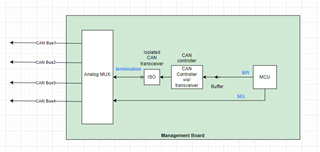Other Parts Discussed in Thread: ISO1044
Tool/software:
Hi TI
I'm looking to extend my CANbus routing and need a solution with isolation and repeater capabilities.
Does TI offer any application notes, reference designs, or product recommendations to support this?
Thanks,
Paul




